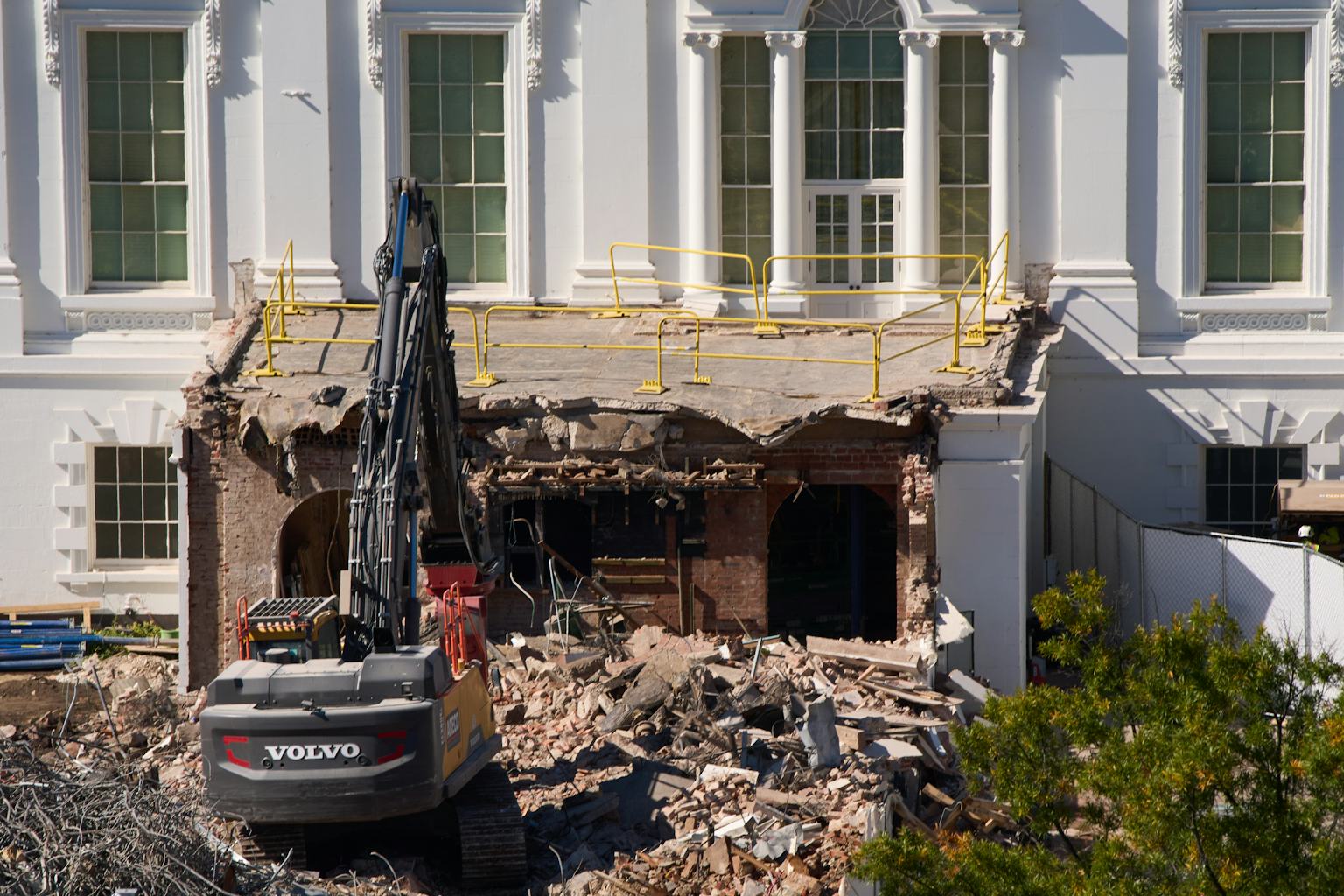
There’s a certain symbolism in the sound of hammers echoing through the East Wing of the White House. Dust clouds rise, walls fall, new corridors take shape, and underneath the surface of renovation lies something far deeper than interior design. The demolition and rebuilding of the East Wing may look like construction work to the untrained eye, but for those who’ve watched Donald Trump long enough, it feels like something else entirely, a metaphor, even a manifestation, of his political philosophy.
Trump is not merely refurbishing a historic space. He is, once again, asserting ownership. He’s marking territory, reshaping the house of the people into the home of one man, the way a monarch renovates a palace or a mogul rebrands a skyscraper. The East Wing may soon gleam with marble floors and gold-plated fixtures, but beneath the sheen lies a troubling question: does Donald Trump see the White House as a temporary seat of leadership or as his permanent address?
This isn’t just about bricks and paint. It’s about power, permanence, and a vision of America that bends toward one man’s ego. The construction crews may think they’re building new walls, but in reality, they’re tearing down old boundaries, the invisible but sacred ones that separate the presidency from personal possession.
Every administration leaves its mark on the White House. The Obamas added a vegetable garden. The Kennedys brought art and music. The Roosevelts installed a swimming pool and a press room. But these were symbolic of accessibility, optimism, and progress. Trump’s projects, in contrast, always seem to hum with self-promotion. His towers, his golf courses, his hotels, all share the same DNA of grandeur and self-branding. When Trump renovates, he doesn’t restore, he redefines.
And that’s what makes this latest overhaul so unnerving. Because when a man who sees everything through the prism of ownership moves back into the nation’s most symbolic house, and starts tearing down walls, you have to wonder what else he’s planning to remodel.
The East Wing isn’t just any section of the White House. It’s traditionally associated with the First Lady’s offices and ceremonial functions, the public face of the presidency. Changing that space isn’t just cosmetic; it’s psychological. It signals a shift in what the presidency represents. The East Wing has always been about accessibility and representation — the human side of power. What happens when that side is rebuilt according to Trump’s blueprint?
You can almost hear him saying it: “This is my house. I built it better than anyone before me.”
And in a way, that’s the essence of the Trump worldview. Everything, from the nation’s institutions to its landmarks, is seen as an extension of his persona. There is no boundary between the man and the machinery of power.
The act of rebuilding is, at its core, an act of control. It’s rewriting history with a hammer and chisel. To rebuild something is to say, “I can do it better.” But Trump’s version of “better” is rarely about improvement for the public good, it’s about creating a reflection of himself in everything he touches. A hotel lobby must sparkle like his cufflinks. A political office must serve his image. A democracy must bend to his narrative.
That’s what makes the East Wing reconstruction more than a mere architectural project. It’s a statement, one that says Trump is not just visiting the White House. He’s reclaiming it. And that’s a chilling thought for anyone who still believes in the rotating door of American democracy.
There’s a line between leadership and ownership, and Trump has always blurred it. His rhetoric has long implied that he, and only he, can save the country, a line that turns democracy into a brand and governance into a personal enterprise. If he views the White House as his property, then what’s next? Does he view the Constitution as a contract he can renegotiate?
America has always prided itself on the peaceful transfer of power, the graceful exit, the dignified farewell. Presidents come and go, but the house remains the same. It belongs to the people, to history, to democracy itself. Yet, the tone of this reconstruction feels different, as if Trump is laying the foundations for something more enduring than a term in office.
A new marble floor might just be a floor. But it might also be a stage, for a legacy, for a performance, for a claim to permanence. Trump has always thrived on spectacle, on turning politics into a show where the spotlight never shifts away from him. The East Wing, under his vision, risks becoming another stage set, a physical manifestation of his belief that he alone defines what America should look like.
Perhaps this all sounds symbolic, even melodramatic. But in politics, symbols matter. Architecture speaks. Every renovation, every redesign, tells a story about power and identity. And when the man doing the rebuilding is someone who has repeatedly flirted with authoritarian impulses, it’s impossible not to read meaning into the noise of demolition.
So, while some might shrug at the sight of bulldozers on the White House lawn, others hear the creak of democracy’s foundations shifting. If the People’s House becomes just another Trump property in spirit, even metaphorically, then something essential has already been lost.
It’s not that renovations are bad. It’s what they represent when done by a man who believes that leadership equals ownership. Because when the line between the two vanishes, so does accountability. And when the East Wing is rebuilt in Trump’s image, one can’t help but wonder: how long before he tries to rebuild the rest of America the same way?
In the end, the hammering in the East Wing isn’t just construction noise. It’s a drumbeat, steady, confident, and echoing a message that democracy would do well to hear: Donald Trump doesn’t just want to live in the White House again. He wants to own it. And maybe, just maybe, he’s already started.
No comments:
Post a Comment